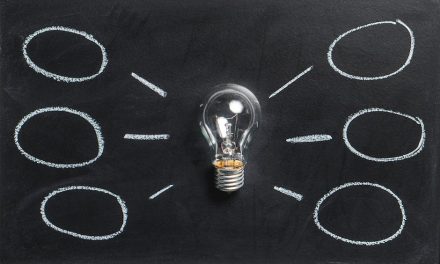Table of Contents
“Unlock the Power of Your Mind: Master Decision-Making with Cognitive Bias Awareness”
Introduction
“Thinking, Fast and Slow” by Daniel Kahneman is a groundbreaking book that delves into the complexities of human decision-making processes. In this book, Kahneman explores the two systems of thinking that drive our choices – the fast, intuitive system and the slow, deliberate system. By understanding the cognitive biases that influence our judgments and decisions, readers can gain valuable insights on how to make better choices and avoid common pitfalls. This book offers a deeper understanding of the human mind and provides practical strategies for improving decision-making in various aspects of life.
The Importance of Understanding Cognitive Bias in Decision Making

The Importance of Understanding Cognitive Bias in Decision Making
In today’s fast-paced world, making decisions quickly and efficiently is crucial. However, the quality of our decisions can be compromised by cognitive biases, which are inherent flaws in our thinking processes. These biases can lead us to make irrational and illogical choices, often without even realizing it. Therefore, it is essential to develop a deeper understanding of cognitive bias in order to make better decisions.
One of the key concepts in understanding cognitive bias is the distinction between two systems of thinking: System 1 and System 2. System 1 is fast, intuitive, and automatic, while System 2 is slow, deliberate, and effortful. Daniel Kahneman, a renowned psychologist and Nobel laureate, explores this distinction in his book “Thinking, Fast and Slow.” He argues that many cognitive biases arise from the dominance of System 1 thinking, which relies on heuristics and shortcuts rather than careful analysis.
One common cognitive bias is the availability heuristic, which occurs when we judge the likelihood of an event based on how easily we can recall similar instances. For example, if we hear about a plane crash on the news, we may become more fearful of flying, even though statistically, flying is much safer than driving. This bias can lead us to overestimate the probability of rare events simply because they are more vivid in our minds.
Another cognitive bias is the confirmation bias, which refers to our tendency to seek out information that confirms our preexisting beliefs and ignore or dismiss evidence that contradicts them. This bias can prevent us from considering alternative viewpoints and hinder our ability to make objective decisions. By understanding this bias, we can actively seek out diverse perspectives and challenge our own assumptions, leading to more well-rounded and informed decisions.
Furthermore, the anchoring bias is a cognitive bias that occurs when we rely too heavily on the first piece of information we receive when making a decision. For example, if we are negotiating the price of a car and the seller starts with a high asking price, we may be anchored to that number and have difficulty deviating from it. This bias can lead to suboptimal outcomes and prevent us from considering other possibilities.
Understanding cognitive biases is not only important for individual decision making but also for organizations and institutions. In the business world, for instance, cognitive biases can influence strategic planning, hiring decisions, and investment choices. By recognizing and mitigating these biases, organizations can make more rational and effective decisions, leading to better outcomes and increased success.
In conclusion, cognitive biases are inherent flaws in our thinking processes that can compromise the quality of our decisions. Developing a deeper understanding of these biases is crucial for making better decisions. By recognizing the dominance of System 1 thinking, we can be more aware of the heuristics and shortcuts that lead to biases. Understanding biases such as the availability heuristic, confirmation bias, and anchoring bias allows us to actively counteract them and make more rational choices. Moreover, organizations can benefit from understanding cognitive biases and implementing strategies to mitigate their impact. Ultimately, by embracing a deeper understanding of cognitive bias, we can improve our decision-making abilities and achieve better outcomes in all aspects of life.
Exploring the Concepts of Thinking Fast and Thinking Slow
Thinking, Fast and Slow by Daniel Kahneman: How to Make Better Decisions with a Deeper Understanding of Cognitive Bias
In his groundbreaking book, “Thinking, Fast and Slow,” Nobel laureate Daniel Kahneman explores the two systems of thinking that drive our decision-making processes. These systems, known as “thinking fast” and “thinking slow,” have a profound impact on our ability to make rational choices and avoid cognitive biases.
Thinking fast refers to our intuitive, automatic, and effortless mode of thinking. It is the system that allows us to quickly recognize patterns, make snap judgments, and react instinctively to situations. This type of thinking is essential for our survival, as it enables us to respond rapidly to threats and opportunities in our environment. However, thinking fast is also prone to errors and biases, as it relies on mental shortcuts and heuristics that can lead us astray.
On the other hand, thinking slow is our deliberate, reflective, and effortful mode of thinking. It involves careful analysis, logical reasoning, and conscious decision-making. Thinking slow requires us to slow down, question our assumptions, and consider alternative perspectives. While thinking slow is more reliable and accurate than thinking fast, it is also mentally taxing and time-consuming. As a result, we often default to thinking fast, even when a slower and more deliberate approach would yield better results.
Kahneman argues that understanding the interplay between thinking fast and thinking slow is crucial for making better decisions. By recognizing the limitations of our intuitive thinking and actively engaging our reflective thinking, we can mitigate the impact of cognitive biases and improve the quality of our choices.
One of the key concepts explored in the book is cognitive bias. Cognitive biases are systematic errors in thinking that distort our judgment and decision-making. They arise from the shortcuts and heuristics employed by our thinking fast system. These biases can lead us to make irrational choices, overlook important information, and fall victim to logical fallacies.
Kahneman identifies several common cognitive biases, such as the availability bias, confirmation bias, and anchoring bias. The availability bias refers to our tendency to rely on readily available information when making judgments, even if it is not representative or accurate. The confirmation bias leads us to seek out information that confirms our preexisting beliefs and ignore evidence that contradicts them. The anchoring bias occurs when we rely too heavily on the first piece of information we encounter when making decisions.
By understanding these biases and being aware of their influence, we can take steps to counteract them. Kahneman suggests techniques such as actively seeking out diverse perspectives, considering alternative explanations, and using decision-making frameworks that encourage systematic analysis.
Furthermore, “Thinking, Fast and Slow” highlights the importance of feedback and learning in improving our decision-making. Kahneman emphasizes the need to reflect on our past choices, evaluate their outcomes, and adjust our thinking accordingly. By embracing a growth mindset and being open to feedback, we can continuously refine our decision-making skills and become more effective in navigating complex situations.
In conclusion, “Thinking, Fast and Slow” provides a comprehensive exploration of the concepts of thinking fast and thinking slow. By understanding the strengths and limitations of these two systems of thinking, we can make better decisions and avoid the pitfalls of cognitive biases. Through self-awareness, deliberate reflection, and a commitment to learning, we can enhance our decision-making abilities and achieve greater success in both our personal and professional lives.
Applying the Principles of Thinking, Fast and Slow in Everyday Life
Thinking, Fast and Slow by Daniel Kahneman is a groundbreaking book that explores the two systems of thinking that drive our decision-making processes. In the previous sections, we delved into the concepts of System 1 and System 2 thinking, as well as the various cognitive biases that can influence our judgments. Now, let’s explore how we can apply the principles of Thinking, Fast and Slow in our everyday lives to make better decisions.
One of the key takeaways from Kahneman’s book is the importance of recognizing when we are relying on System 1 thinking and when we need to engage System 2 thinking. System 1 thinking is fast, intuitive, and automatic, while System 2 thinking is slow, deliberate, and effortful. By being aware of these two systems, we can better understand the potential pitfalls of relying solely on our intuition and learn to engage our analytical thinking when necessary.
One area where we can apply this knowledge is in financial decision-making. Our intuition often leads us astray when it comes to money matters. We may be tempted to make impulsive purchases or fall victim to the sunk cost fallacy, where we continue to invest in something simply because we have already put so much time or money into it. By consciously engaging our System 2 thinking, we can take a step back, evaluate the situation objectively, and make more rational financial decisions.
Another area where the principles of Thinking, Fast and Slow can be applied is in interpersonal relationships. Our intuitive judgments of others can be influenced by various biases, such as the halo effect or the availability heuristic. These biases can lead us to make snap judgments about people based on limited information or stereotypes. By slowing down and engaging our analytical thinking, we can challenge these biases and make more accurate assessments of others, leading to better relationships and more effective communication.
In addition to interpersonal relationships, the principles of Thinking, Fast and Slow can also be applied to our own self-awareness and personal growth. Our intuitive judgments of ourselves can be clouded by biases such as the confirmation bias or the overconfidence effect. These biases can prevent us from recognizing our own flaws and hinder our ability to learn and grow. By engaging our System 2 thinking, we can become more self-aware, challenge our biases, and actively seek out feedback and opportunities for improvement.
Furthermore, the principles of Thinking, Fast and Slow can be applied to decision-making in the workplace. Our intuitive judgments of colleagues or potential hires can be influenced by biases such as the anchoring effect or the framing effect. These biases can lead us to make biased hiring decisions or overlook valuable contributions from team members. By engaging our analytical thinking, we can mitigate these biases and make more objective and fair decisions in the workplace.
In conclusion, the principles of Thinking, Fast and Slow can be applied in various aspects of our everyday lives to make better decisions. By recognizing the two systems of thinking and being aware of the cognitive biases that can influence our judgments, we can engage our analytical thinking when necessary and challenge our intuitive judgments. Whether it’s in financial decision-making, interpersonal relationships, personal growth, or the workplace, applying the principles of Thinking, Fast and Slow can lead to more rational, accurate, and effective decision-making.
Critically Analyzing the Key Ideas and Findings in Thinking, Fast and Slow
Thinking, Fast and Slow by Daniel Kahneman is a groundbreaking book that delves into the complexities of human decision-making. In this article, we will critically analyze the key ideas and findings presented in the book, with a focus on how a deeper understanding of cognitive bias can help us make better decisions.
One of the central concepts in Thinking, Fast and Slow is the distinction between two systems of thinking: System 1 and System 2. System 1 operates automatically and effortlessly, relying on intuition and heuristics. On the other hand, System 2 is slow, deliberate, and requires conscious effort. Kahneman argues that our reliance on System 1 thinking often leads to cognitive biases that can cloud our judgment.
One such cognitive bias is the availability heuristic, which refers to our tendency to judge the likelihood of an event based on how easily we can recall similar instances. This bias can lead us to overestimate the probability of rare events if they are more vivid or memorable. For example, after a highly publicized plane crash, people may become more fearful of flying, even though statistically, flying is much safer than driving.
Another cognitive bias explored in the book is the anchoring effect. This bias occurs when we rely too heavily on the first piece of information we receive when making a decision. For instance, if a car salesman starts negotiations with a high price, it can anchor our perception of what is a reasonable price, leading us to make a higher offer than we otherwise would.
Kahneman also discusses the concept of loss aversion, which refers to our tendency to strongly prefer avoiding losses over acquiring gains. This bias can lead to irrational decision-making, as we may be more willing to take risks to avoid losses than to achieve gains of equal value. Understanding this bias can help us make more rational decisions by considering the potential gains and losses objectively.
Furthermore, the book explores the impact of framing on decision-making. The way information is presented can significantly influence our choices. Kahneman presents an experiment where participants were more likely to choose a medical procedure with a higher survival rate when it was framed as having a 90% success rate, compared to when it was framed as having a 10% failure rate. This demonstrates how the same information, presented differently, can lead to different decisions.
In addition to cognitive biases, Kahneman also delves into the concept of overconfidence. He argues that humans tend to be overly confident in their judgments and predictions, often underestimating the uncertainty and complexity of the world. This overconfidence can lead to poor decision-making, as we may not adequately consider alternative possibilities or seek out additional information.
Overall, Thinking, Fast and Slow provides a comprehensive exploration of the cognitive biases that affect our decision-making processes. By understanding these biases and the limitations of our thinking, we can strive to make better decisions. This book serves as a valuable resource for anyone seeking to improve their decision-making skills and gain a deeper understanding of the complexities of the human mind.
Q&A
1. Who is the author of “Thinking, Fast and Slow”?
The author of “Thinking, Fast and Slow” is Daniel Kahneman.
2. What is the book about?
The book explores cognitive biases and provides insights on how to make better decisions by understanding the two systems of thinking: fast and slow.
3. What is the main focus of the book?
The main focus of the book is to help readers gain a deeper understanding of cognitive biases and how they impact decision-making processes.
4. What is the purpose of the book?
The purpose of the book is to equip readers with knowledge and strategies to overcome cognitive biases and improve their decision-making abilities.
Conclusion
“Thinking, Fast and Slow” by Daniel Kahneman provides valuable insights into cognitive bias and offers strategies for making better decisions. By understanding the two systems of thinking, the fast and intuitive System 1 and the slow and deliberate System 2, readers can gain a deeper understanding of their own thought processes. The book highlights various cognitive biases that affect decision-making and provides practical techniques to mitigate their impact. Overall, “Thinking, Fast and Slow” is a thought-provoking and informative read that can help individuals improve their decision-making abilities.





Recent Comments